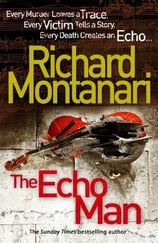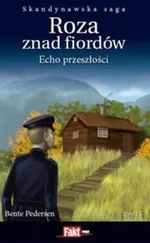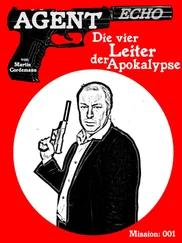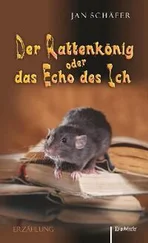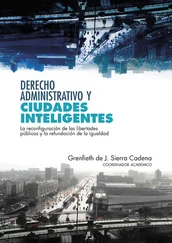She walked for ten minutes before the barn started to look any closer. It was a trick of perspective, she decided. The building was both bigger and further away than she had first assumed. The aerial photograph had given an accurate impression of its rectangular outline, but not of its scale. As she got closer, she realised that the barn was of a really substantial size. And it was sturdily constructed, more than just solid, somehow formidable. It did not reflect the humble domestic architecture of the clustered farm buildings she had just left. They were simpler and more recent – built, she guessed, in the middle of the nineteenth century. The barn might be a barn now, in terms of its function. But despite its remote location, it surely must have been something grander at some stage in its past. It was a sombre building. Even in the flat, rainy absence of light, it seemed to cast a shadow bigger than itself.
It had originally possessed windows in what had once been an upper storey. They had been flat rectangles rather than arched. And they had been bricked in a great many years ago with blocks made of the same stone as the rest of the construction. They had weathered over time to the same grey as the walls. But the mortar between them had blackened and rotted and gave the old work away. Suzanne found herself wishing she had at least some working knowledge of architecture. But she possessed very little and what she did know she had learned incidentally. Because she had researched him for a documentary special, she knew quite a lot about the work and working methods of the Nazi architect, Albert Speer. But with a shiver, she realised that the building in front of her was calling to mind something far removed from Speer’s grandiose classical plagiarism. It made her think, of all things, of the Whitechapel killer, Jack the Ripper.
She stopped dead in her own muddy footprints. It was an absurd subject to be entering her head, wasn’t it, by a ditch at the edge of a muddy field in sheeting rain in France on an April afternoon? What did a Victorian serial killer have to do with Harry Spalding and the happy bloodlust of the Jericho Crew?
And then she had it. She had thought the barn looked a little like a Norman church deprived of its tower or its spire. But what it actually resembled, with those square windows it had once possessed, was a Masonic temple. There were tricks and puns and cul-de-sacs of architectural detail about the barn that she did not have the expertise to recognise. But the closer she got to it the more she could see they were there, just as they were perhaps the defining characteristic in Masonic temples. Some people had speculated that the Ripper was a Mason. There had never been any hard evidence to support this belief, because the Ripper had never been identified and convicted. But that had been the link in Suzanne’s mind. And it gave her an even greater sense of uneasiness approaching the barn, thinking it perhaps a place that harboured more than just the chill inherent in buildings that were old and semi-derelict and standing in unhappy isolation.
Her feet were wet as well as muddy, now. The soil, black and clinging, had risen above her leather ankle boots and smeared her tights to the calf. She thought the boots probably ruined. They were from Russell and Bromley and not Millets and they had cost her a penny short of two hundred quid – and the credit card had done the buying, so they weren’t even paid for yet. It was her own fault, of course. But who would think to pack wellingtons to take on a ferry? She looked around. The landscape was wet and desolate. She had thought the farmer would warm to her smile and politeness. She had thought rough-spoken but gallant Pierre Duval would give her a lift across the mire aboard something with a close gear ratio and chunky tyres. But she had got that part of the proceedings badly wrong.
Then, suddenly, she was there. The ground rose and hardened towards the building’s walls. The incline was slight but the drainage effective and her feet approached the last few yards of distance on firm earth. She looked for the bedraggled squadron of birds that had led the way. She had thought they were starlings. But they had veered off on some other course. There were no birds. There were no rabbits or squirrels and the barking dog of the farmyard had long faded into silence. There was nothing living in proximity to Harry Spalding’s old Jericho Crew hideaway. Even the poplars hereabouts seemed stunted and reluctant. But that was just her imagination, Suzanne knew. She looked at the walls, at rain-stained masonry, at the filled-in windows, like blind and baleful eyes looking darkly outwards at the featureless world of Pierre Duval’s domain. She looked at the large oak double door, which did not appear locked. And she felt afraid and awfully alone and vulnerable wildly beyond what she had felt earlier, on the road, when she had stopped for the comfort of a smoke.
She forced her feet forward. What was the matter with her? She was a grown woman. She was here in broad daylight, for Christ’s sake. She had wanted to come. She pulled one of the big doors open a fraction and slipped inside. And her first impression was of an almost sepulchral darkness and cathedral calm. She looked up, looking for the chinks in the building’s fabric that would allow some meagre light for her eyes eventually to adjust to. The first thing that came into focus were the wooden beams from which she assumed Derry Conway had taken the last leap of his life. They were very thick and substantial and she could see no structural reason for them unless they had once supported a floor. That would make sense, too, of the height of the bricked-in windows.
Slowly, reluctantly, she brought her eyes down to the level of where she stood. And she saw that the barn did not stand empty. Crates of produce had been piled almost to the height of the ceiling along the entire length of the wall to her left. And there was, at the centre of the barn on the ground in front of her, a rough, high pyramid of beets. It reached almost to the beams. It was so big and high that it did not really look stable. She almost smiled. The prospect of being crushed by an avalanche of beets was an ignominious one. It would not be at all a dignified death.
The quiet in there was unnerving. And there was nothing very reassuring about the produce in the place. It should have given the building a workaday feel of farming domesticity. But it did not. Suzanne wondered precisely why. The quiet was one reason. Another was the fact that she could smell nothing in there, neither the earth from which the pyramid of root vegetables had been taken, nor whatever was stored in the crates. Perhaps it was not fruit or vegetables, but a hoard of wine, she thought. She would approach and recognise the musty, distinctive smell of corks stoppering old bottles.
She walked across to the crates. Her eyes were adjusted now to the lack of light. The crates were wooden and venerable. Some had dates in faded ink on the pale wood of their sides. Others had the year branded into them. They should have had bottles of wine in them, old and valuable vintages, she thought. None of the dates was more recent than 1915. But the crates were full of apples and plums and damsons and pears. The fruit was fresh, the burnish of red and russet and gold on firm flesh in the gloom. It was odd that nothing smelled. There was not the hint, not the ghost of the ripe and woody scent of an orchard from the fruit.
On the wall opposite the one against which the crates were piled, Suzanne saw something that almost caused her composure to abandon her. She was very frightened in the refuge of the Jericho Crew. Everything here was mundane. Nothing here had threatened her. And yet she was sure she had never been in a place that harboured so much pure and absolute menace. Before the far wall, she saw a uniform line of men standing perfectly still against the shadowy stone. They did not approach. They just waited and watched, motionless and poised. She almost screamed, before her mind was able to rationalise the sight as a line of coats on hooks, hanging there.
Читать дальше


